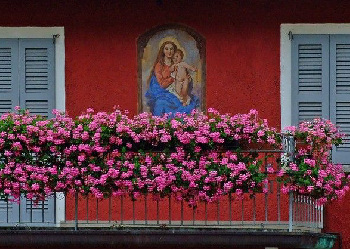Rose of roses
At the roots of the Marian month of May (part I)
For us Catholics, the fact that the month of May is dedicated to the Blessed Virgin Mary is now a consolidated custom. Although the month of May is now coming to an end, it seems appropriate to reflect on the historical origin of this devotion.
The month of May, whose name derives from the goddess Maia to whom the roses were dedicated, had been consecrated for ancient Greece and ancient Rome to the goddesses of fertility and spring.
In May, nature fully manifests its fertilizing power. In the multifaceted beauty of shapes and colors, creation shows off the wide range of ways that life can take on earth. And in this sense, the blossoming of roses is a unique spectacle of its kind.
The juxtaposition of the name of Mary to the rose dates back to the thirteenth century, through Alfonso X, king of Castile and Leon, who, in one of the 421 Marian hymns collected in the book Las cantigas de Santa Maria (The canticles of St. Mary), sang: “Rose of roses, flower of flowers, woman among women, the only lady, light of the saints and the way of the skies”. While Henry Suso of Constance (1295-1366), in the Book of Eternal Wisdom prayed: “Blessed are you rising dawn, above all creatures, and blessed is the red roses meadow on your beautiful face, adorned with the red flower ruby of Eternal Wisdom!”. From these brief notes we understand why the Marian prayer par excellence bears the name of “crown of the Holy Rosary”.
Even before the month of May was dedicated to Mary, there existed the devotion of devoting in prayer an entire month, called Tricesimum, to Mary. The liturgical calendar of the church of the first centuries reported a Marian feast on May 15th. Traces of this feast still remain in the calendar of the Syriac Church, which has, alongside the normal Marian feasts, also a small cycle of festivals of agricultural origin, which are celebrated on the 15th day of the months of January, May and August, dedicated respectively to Our Lady of the seeds, Our Lady of the ears and Our Lady of the vineyards, attested in the apocryphal Transitus Mariae, for the first time. The liturgy of the Chaldean Church also presents an ancient hymn in which we pray: “It was prescribed that the commemoration of the Blessed Virgin would have been three times a year: in December for the seeds, in May for the ears and in August for the vineyards: elements from which the matter of the Sacrament of the Eucharist is obtained”.
The first pious practices concerning the devotion of the month of May date back to the 16th century. St. Philip Neri is responsible for adorning the image of the Madonna with flowers, while praises were sung and acts of mortification were offered in her honour.
In the fifteenth century in May, it was customary to sing and celebrate for creatures that everyone loved, animals or vegetables. It was in 1677 that in a Dominican Novitiate the Confraternity called “Comunella” was erected in Fiesole, whose confreres decided to sing and celebrate for the Virgin Mary. Initially the festival was held on the first day of the month, Sundays were added soon and all other days shortly thereafter.
Father Massimo Cardamone





